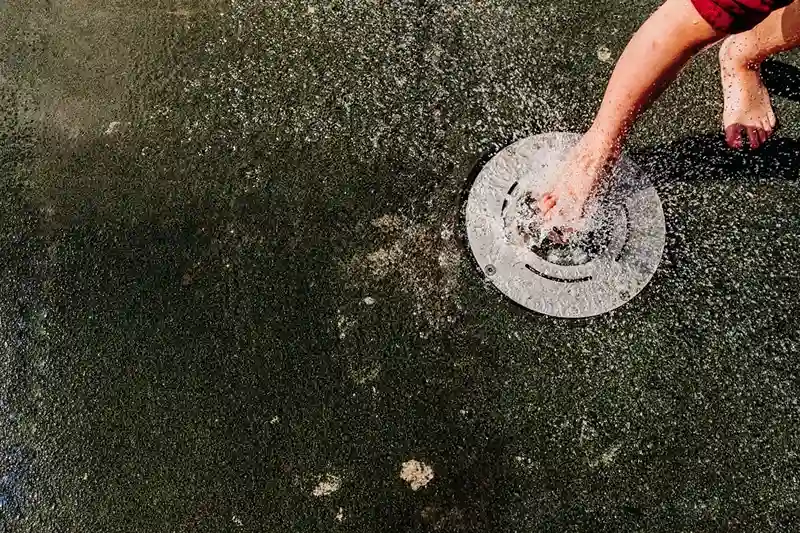A blocked shower drain is a major problem. Water accumulates around your feet, drains slowly, and occasionally emits a terrible odor. Don’t worry, you can repair it! In this lesson, we’ll teach you how to unclog a shower drain step by step using basic techniques. Let us have your shower running smoothly again!
How to Unclog Your Shower Drain

Before you contact a plumber, try these simple DIY solutions to clear clogged shower drains without breaking a sweat.
Using Boiling Water
One of the simplest ways to clean out shower drain blockages is with boiling water. This procedure is best utilized for light obstructions caused by soap scum accumulation.
- Bring a big saucepan of water to a boil.
- Carefully pour it down the drain in two-three stages, allowing it to work between each.
- Run hot water for a few minutes to clean away any loose material.
If the obstruction continues, go to the next method.
Using Baking Soda and Vinegar
This natural treatment helps to break down difficult blockages without using harsh chemicals.
- Pour 1 cup baking soda into the drain.
- Next, add one cup of vinegar.
- Cover the drain and wait 15-30 minutes.
- Flush with hot water to remove the loosened dirt.
This approach is ideal for organic obstructions such as hair and soap residue.
Plunging the Drain
A plunger isn’t just for toilets—it’s also a great tool if you are wondering how to declog shower drains.
- Remove the drain cover.
- Fill the shower with enough water to reach the plunger’s rubber cup.
- Place the plunger over the drain and pump vigorously.
- Check that the water drains adequately; repeat as needed.
Plunging can swiftly remove small clogs!
Using a Plumber's Snake
A plumber’s snake (or drain auger) may solve even the most tenacious obstructions.
- Insert the snake into the drain.
- Turn the handle to push it deeper and clear the obstruction.
- Pull it out and clear the trapped material.
- Flush the drain with hot water.
This tool is highly effective if you are looking to clean out the shower drain. They also clear up deep clogs produced by hair and other deposits.
Removing and Cleaning the Shower Drain Cover

Sometimes, the clog isn’t deep in the pipes but immediately under the drain cover. Here’s how to handle it.
Identifying Your Drain Cover Type
Shower drain covers come in many styles:
- Screw-in coverings (attached by screws)
- Snap-in coverings (easily removable)
- Grid or pop-up covers?
Before continuing, make sure you have the correct kind.
Safely Removing the Drain Cover
- For screw-in covers, use a screwdriver to remove them.
- For snap-in covers, carefully pry them off using a flathead screwdriver.
- For pop-up covers, lift and twist counterclockwise.
Take caution not to drop little screws into the drain!
Cleaning Hair and Debris From the Cover
- Wear gloves to remove hair and filth.
- Clean the cover with hot water and dish soap.
- If you have mineral accumulation, soak it in vinegar.
A clean cover promotes proper water flow.
Reinstalling the Drain Cover Properly
After cleaning:
- Secure the lid back into place.
- Make sure it fits snugly to keep loose hair from sliding in.
Properly put coverings assist in avoiding subsequent obstructions.
What is the Best Drain Clog Remover for Showers?
The finest drain clog remover is determined by the type of blockage.
- For hair clogs: Enzyme-based drain cleaners degrade organic materials safely.
- For grease or soap buildup: Baking soda and vinegar are effective for removing oil and soap buildup.
- For severe clogs: A plumber’s snake is the best solution.
Avoid using aggressive chemical drain cleaners, since they can damage pipes over time.
Overusing drain cleaners can corrode pipes and worsen clogs long-term. For safer alternatives, try a plunger, baking soda/vinegar, or a drain snake first.
Preventing Future Shower Drain Clogs
It’s always better to prevent than to cure! Follow these basic behaviors to keep your drain running smoothly.
Using a Hair Catcher or Drain Strainer
Hair is the leading cause of shower drain blockages. Install a drain strainer to trap hair before it enters the pipes. Cleaning it on a regular basis will help to avoid accumulation.
Regular Drain Maintenance
- Once a week, flush your drains with hot water.
- To avoid muck accumulation, pour a mixture of baking soda and vinegar every month.
- Use a drain snake to remove tiny obstructions before they worsen.
Avoiding Soap Scum Buildup
Soap scum can form over time, resulting in poor drainage. Try these tips:
- Use liquid soap rather than bar soap (which includes lipids that cause clogs).
- Rinse the shower after each use to remove residue.
- To avoid accumulation, clean your drain once a week with hot water.
Flushing the Drain with Hot Water Regularly
A simple hot water flush once a week helps to remove small clogs and keep your pipes clean.
When to Call a Professional Plumber
If none of the DIY solutions work, it’s time to contact a professional.
- Professional plumbers use modern equipment to find and remove severe clogs.
- Check pipes for damage or leakage.
- Provide long-term remedies to avoid recurring obstructions.
If your shower drain remains clogged despite your best efforts, don’t hesitate to seek expert assistance!
Say Goodbye to Clogs – Get Expert Plumbing Help!
Hope you now have an answer to how to unclog the shower drain. A sluggish or blocked drain might be inconvenient, but with the proper approach, you can fix it yourself. Regular maintenance and preventative steps help keep your shower drain clean. How to clear your shower drain
TradesWorksNW specializes in swiftly resolving plumbing difficulties. If you want expert assistance in clearing a clogged shower drain, our technicians are available to help.
